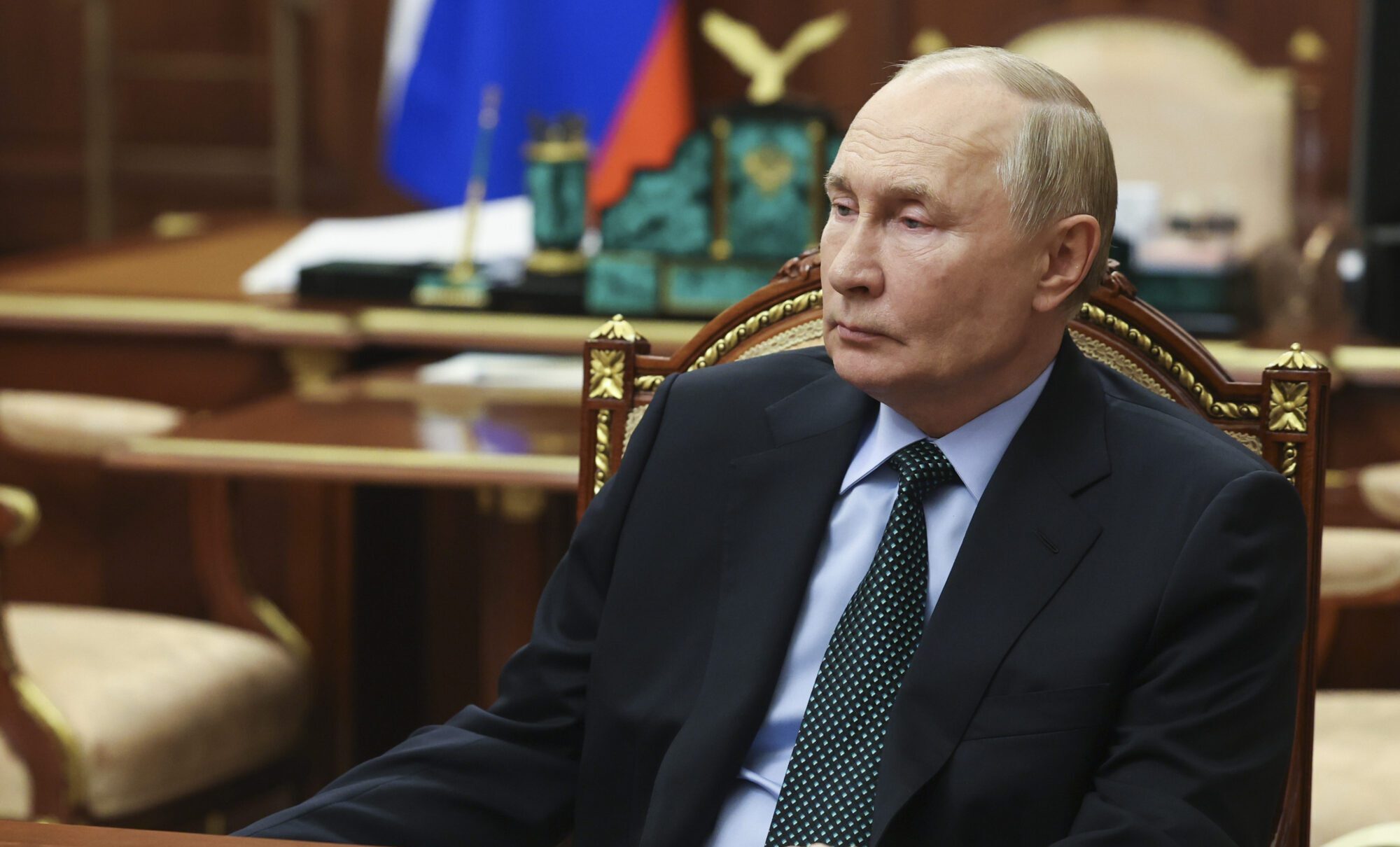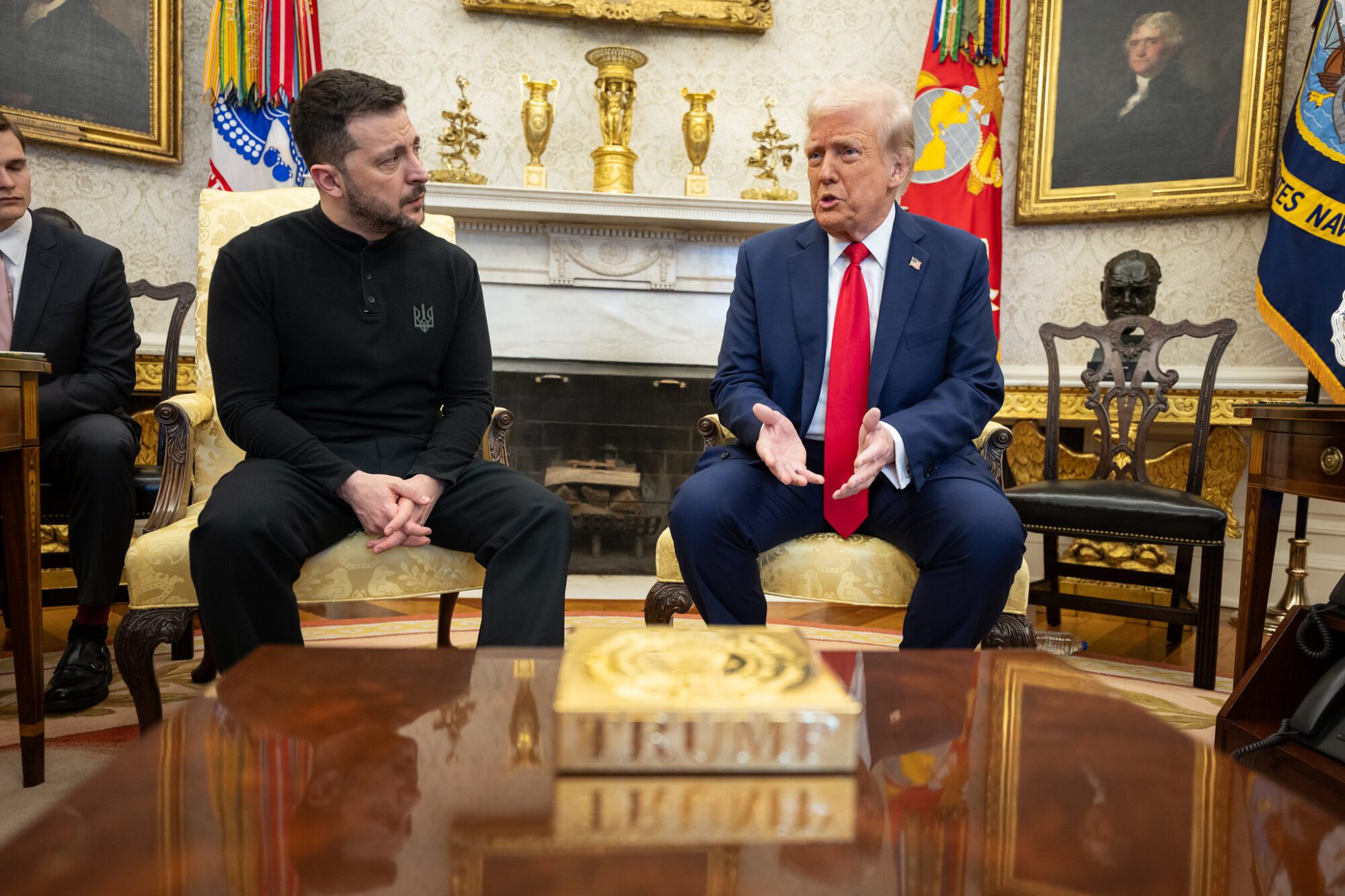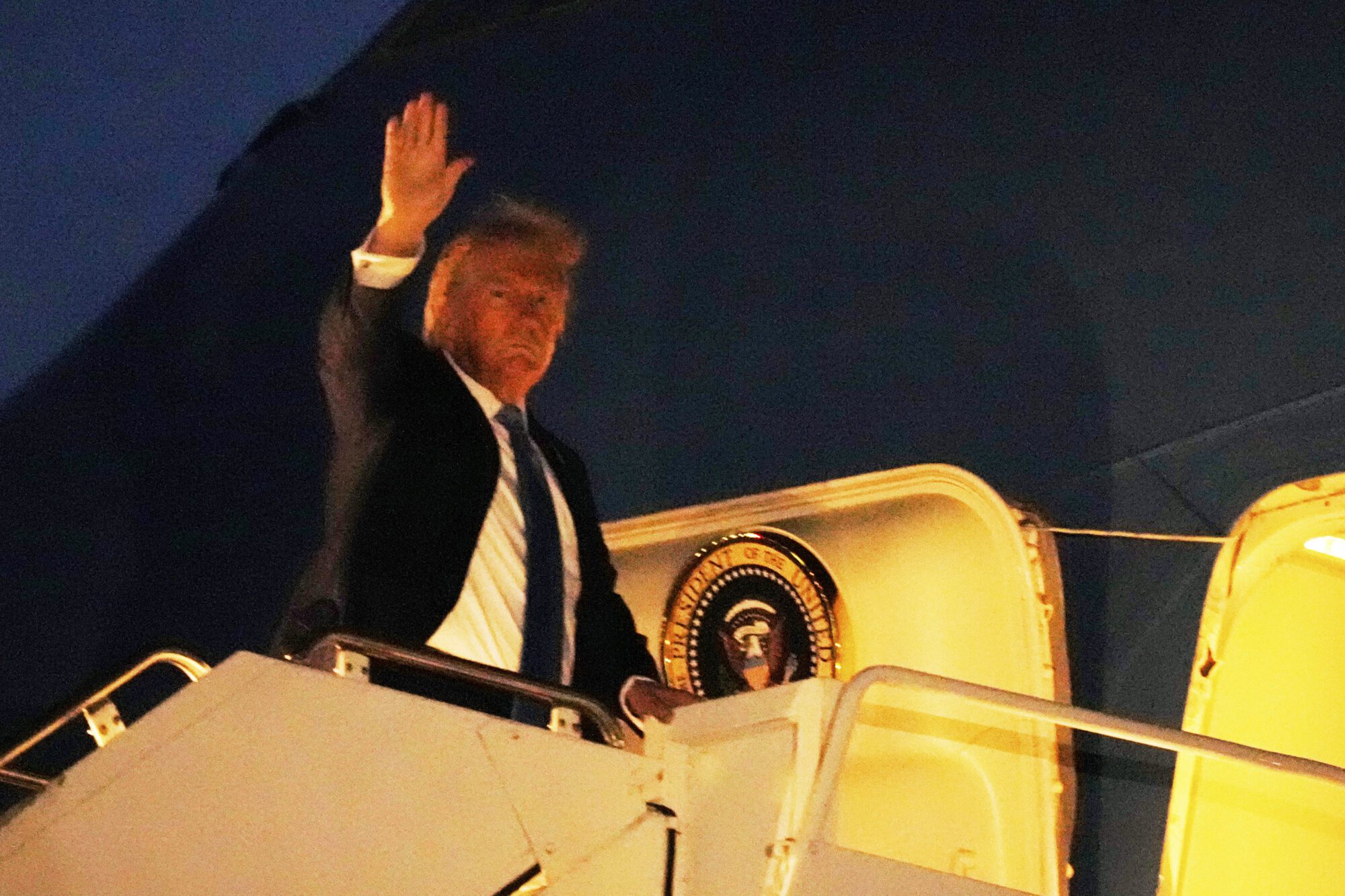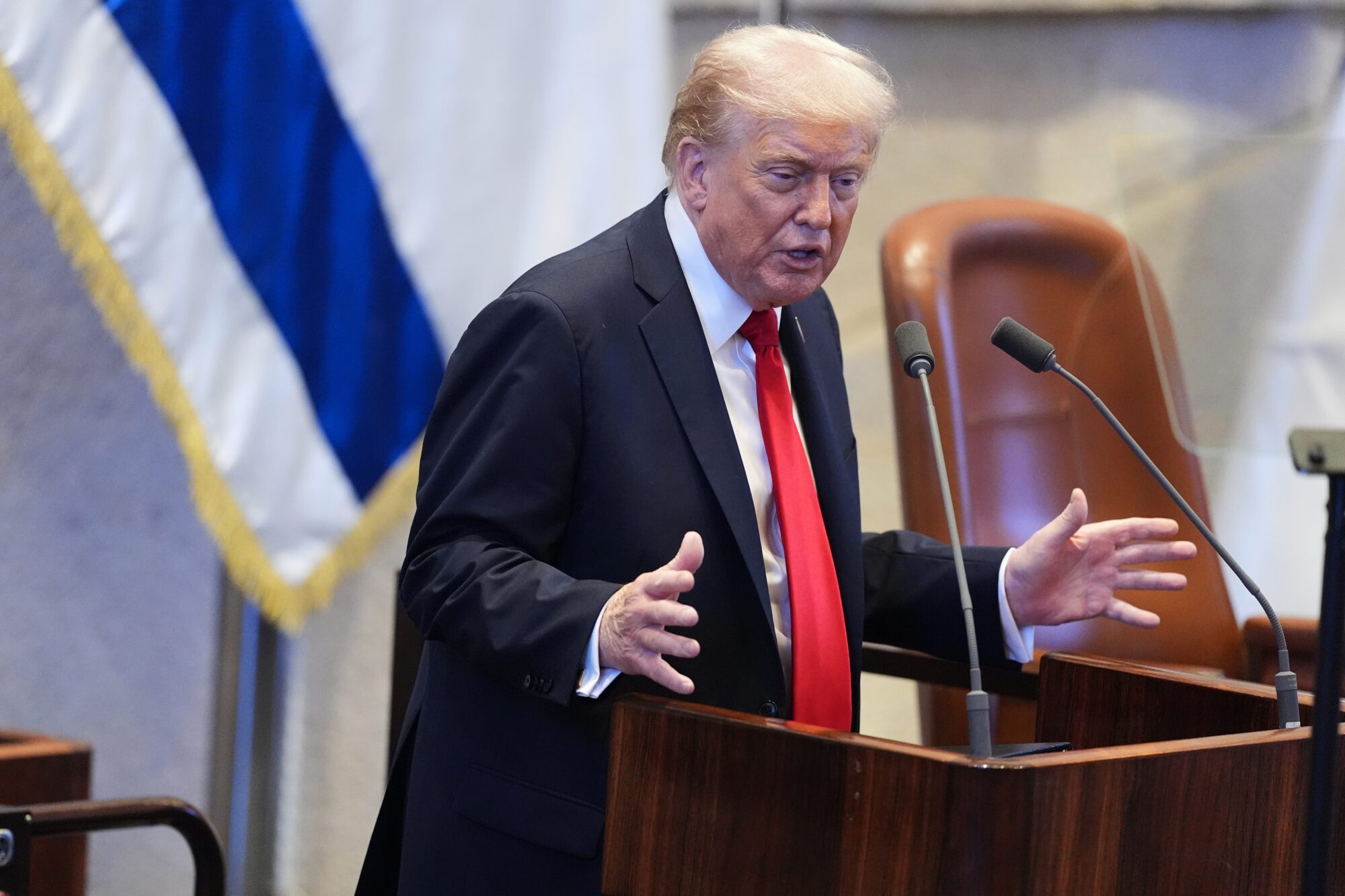Putin says Russia has tested a new intermediate range missile in a strike on Ukraine

Russian President Vladimir Putin listens to Moscow-appointed head of Russian-controlled Zaporizhzhia region of Ukraine, Yevgeny Balitsky during their meeting at the Kremlin in Moscow, Russia, Monday, Nov. 18, 2024. (Vyacheslav Prokofyev, Sputnik, Kremlin Pool Photo via AP)
- The Russian President warned that U.S. air defense systems wouldn’t be capable of intercepting Russian missiles.
The Kremlin fired a new intermediate-range ballistic missile at Ukraine on Thursday in response to Kyiv’s use this week of American and British missiles capable of striking deeper into Russia, President Vladimir Putin said.
In a televised address to the country, the Russian president warned that U.S. air defense systems would be powerless to stop the new missile, which he said flies at Mach 10 and which he called the Oreshnik — Russian for hazelnut tree. He also said it could be used to attack any Ukrainian ally whose missiles are used to attack Russia.
“We believe that we have the right to use our weapons against military facilities of the countries that allow to use their weapons against our facilities,” Putin said in his first comments since President Joe Biden gave Ukraine the green light this month to use U.S. ATACMS missiles to strike at limited targets inside Russia.
The attack Thursday on the central Ukrainian city of Dnipro came in response to Kyiv’s use of longer-range U.S. and British missiles in strikes on Russia this week, Putin said.
“In the case of escalation of aggressive actions, we will respond resolutely in a mirror way,” the Russian president said.
Putin said the Oreshnik struck a well-known missile factory in Dnipro. He also said Russia would issue advance warnings if it launches more strikes with the Oreshnik against Ukraine to allow civilians to evacuate to safety — something Moscow hasn’t previously done.
Putin’s announcement came hours after Ukraine claimed that Russia had used an intercontinental ballistic missile in the Dnipro attack, which wounded two people and damaged an industrial facility and rehabilitation center for people with disabilities, according to local officials. But American officials said an initial U.S. assessment indicated the strike was carried out with an intermediate-range ballistic missile.
The attack comes during a week of escalating tensions, as the U.S. eased restrictions on Ukraine’s use of American-made longer-range missiles inside Russia and Putin lowered the threshold for launching nuclear weapons.
The Ukrainian air force said in a statement that the Dnipro attack was launched from Russia’s Astrakhan region, on the Caspian Sea.
“Today, our crazy neighbor once again showed what he really is,” Ukrainian President Volodymyr Zelenskyy said hours before Putin’s address. “And how afraid he is.”
Russia was sending a message by attacking Ukraine with an intermediate-range ballistic missile capable of releasing multiple warheads at extremely high speeds, even if they are less accurate than cruise missiles or short-range ballistic missiles, said Matthew Savill, director of military sciences at the Royal United Services Institute, a London-based think tank.
“Why might you use it therefore?” Savill said. “Signaling — signaling to the Ukrainians. We’ve got stuff that outrages you. But really signaling to the West ‘We’re happy to enter into a competition around intermediate range ballistic missiles. P.S.: These could be nuclear tipped. Do you really want to take that risk?’”
Earlier this week, the Biden administration authorized Ukraine to use U.S.-supplied, longer-range missiles to strike deeper inside Russia — a move that drew an angry response from Moscow.
Days later, Ukraine fired several of the missiles into Russia, according to the Kremlin. The same day, Putin signed a new doctrine that allows for a potential nuclear response even to a conventional attack on Russia by any nation that is supported by a nuclear power.
The doctrine is formulated broadly to avoid a firm commitment to use nuclear weapons. In response, Western countries, including the U.S., said Russia has used irresponsible nuclear rhetoric and behavior throughout the war to intimidate Ukraine and other nations.
They have also expressed dismay at the deployment of thousands of North Korean troops to Russia to fight against Ukraine.
Also Thursday, Russia also struck Zelenskyy’s home city of Kryvyi Rih, wounding 26 people, said the head of regional administration, Serhii Lysak. The missile strike caused damage to an administrative building, at least five multistory residential buildings, and civilian vehicles.
The Russian Defense Ministry, meanwhile, said in a statement that its air defense systems shot down two British-made Storm Shadow missiles, six HIMARS rockets, and 67 drones.
The statement didn’t say when or where the Storm Shadows were shot down or what they were targeting. Russia earlier reported downing some of the missiles over the illegally annexed Crimean Peninsula.
More than 1,000 days into war, Russia has the upper hand, with its larger army advancing in Donetsk and Ukrainian civilians suffering from relentless drone and missile strikes.
Analysts and observers say the loosening of restrictions on Ukraine’s use of Western missiles is unlikely to change the the course of the war, but it puts the Russian army in a more vulnerable position and could complicate the logistics that are crucial in warfare.
Putin has also warned that the move would mean that Russia and NATO are at war.
“It is an important move and it pulls against, undermines the narrative that Putin had been trying to establish that it was fine for Russia to rain down Iranian drones and North Korean missiles on Ukraine but a reckless escalation for Ukraine to use Western-supplied weapons at legitimate targets in Russia,” said Peter Ricketts, a former U.K. national security adviser who now sits in the House of Lords.
Associated Press writers Jill Lawless in London, and Zeke Miller and Lolita C. Baldor in Washington, contributed to this report.








